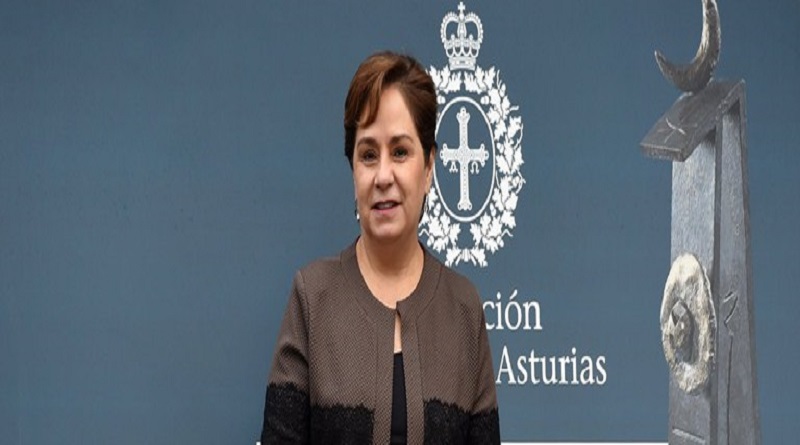Espinosa: Paris Agreement is powerful signal to world
On Friday, the United Nations Convention on Climate Change and the Paris Agreement is being awarded the Princess of Asturias Prize for International Cooperation in the Spanish city of Oviedo. Patricia Espinosa, Executive Secretary of the United Nations Framework Convention on Climate Change (UNFCCC), is accepting the award on behalf of the UNFCCC secretariat, together with her predecessor Christiana Figures. On Thursday, Patricia Espinosa delivered a lecture entitled “The Paris Agreement, an Agenda for Transformation†at the Faculty of Economics and Business of the University of Oviedo. At the lecture, she said the Paris Agreement was a powerful signal of hope for a world where conflicts, humanitarian crisis and pessimism about economic prospects persist. Here is the full transcript:
I am pleased to have the opportunity to address you all just one day before the United Nations Convention on Climate Change and the Paris Agreement is awarded the Princess of Asturias Prize for International Cooperation. I have the enormous privilege of accepting the award as the representative of the Convention secretariat.
This award is a recognition for the many people who worked over many years of long and intense negotiations to secure a new, universal climate change agreement. I must recognize the contribution of my predecessor, Christiana Figueres, under whose leadership the Paris Agreement was adopted. Especially because Christiana took over the reins of the secretariat just after COP15, which took place in 2009, where a result could not be achieved.
Therefore, Christiana arrived at the secretariat in probably the worst moment for intergovernmental process of climate change negotiations. Six years later, Christiana concluded her second term as Executive Secretary with the adoption of the Paris Agreement. As you can see, she set a very high bar that will be difficult to exceed or even to emulate.
The Paris Agreement is a powerful signal of hope for a world where conflicts, humanitarian crisis and pessimism about economic prospects persist. The spirit of solidarity and political will to preserve our planet has continued this year.
Indeed, last week in Kigali, governments agreed to phase down HFCs, the powerful greenhouse gasses used for refrigeration and air conditioning. And just some days before, an international agreement to reduce emissions from international aviation was reached.
And of course the ratification of the Paris Agreement in a record-breaking time allows its entry into force before the climate change conference in Marrakech in November.
The Paris Agreement is truly an agenda to transform our model of growth and development. Today, I would like to share with you some reflections about the importance of this agreement for all people in the world.
I would like to underline three characteristics of Paris Agreement.
The first one is the long-term goal in the agreement. In Paris, governments committed to limit warming to less than 2 degrees Celsius, and as close to 1.5 degrees C as possible. They also included a goal of climate neutrality in the middle of the century. This means by that time, human emissions – from electricity generation, from transportation, from manufacturing, from agriculture, and from deforestation and our management of natural resources – can be absorbed by nature.
The difference between 1.5 degrees and 2 degrees of warming may seem an insignificant goal taking into account that we experience much larger temperature variations every day. But when applied at a planetary scale, the impacts from a half a degree of warming are very significant.
From increased heat waves and sea level rise to reduced water availability and crop yield, every half a degree of warming implies much more devastating impacts and natural catastrophes than those we already face. In fact, the difference between 1.5 and 2 degrees may be the existence of some small island states.
For example, this temperature rise would cause the loss of two thirds of habitable land in the Seychelles. Also, limiting atmospheric warming as close as possible to 1.5 degrees would reduce negative impacts on 44 low-lying islands and coastal countries. In Spain, a two degrees of warming would imply long droughts and longer heat waves, both phenomena would impact public health, food security and the economy.
The second characteristic that makes the Paris Agreement extraordinary is its universality. For the first time, all countries recognize their responsibility in fighting climate change. Without any doubt, the Paris Agreement sets obligations for developed and developing countries that have to be fulfilled, and all of them without any exception recognize they have to make efforts in this fight.
This was clear through the 190 plans that countries submitted before Paris, containing their intended contributions according to their capacities and the challenges they face at the national level.
This means that today, in every corner of this planet, a commitment exists to reduce and avoid carbon emissions. This signifies a promise of hope for a future environment that allows stable growth for all.
Just months after submitting their initial contributions, some countries have even reviewing them to reinforce their goals. Numerous examples prove that climate action is not in contradiction with economic growth. On the contrary, many actions against climate change help achieve economic and social growth.
The third amazing characteristic of the Paris Agreement is its recognition of the role non-State actors have in the necessary, deep transformation – private sector, subnational and local governments, artists, scientists and many civil society groups, and in the end each person.
It is a document negotiated and adopted by governments, but governments alone can’t fulfil the commitments it includes.




